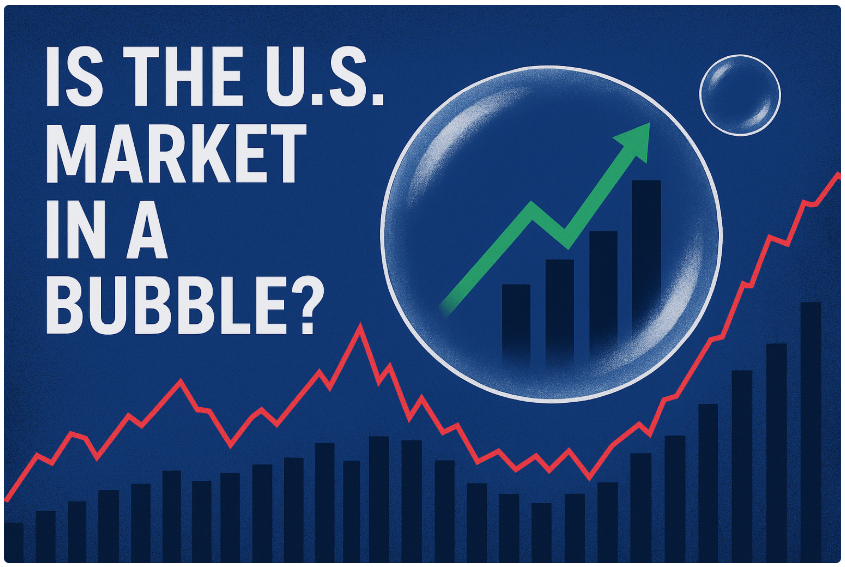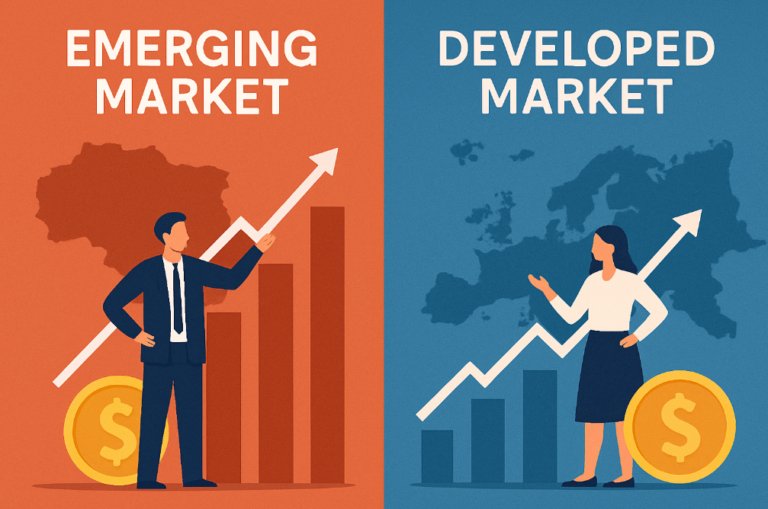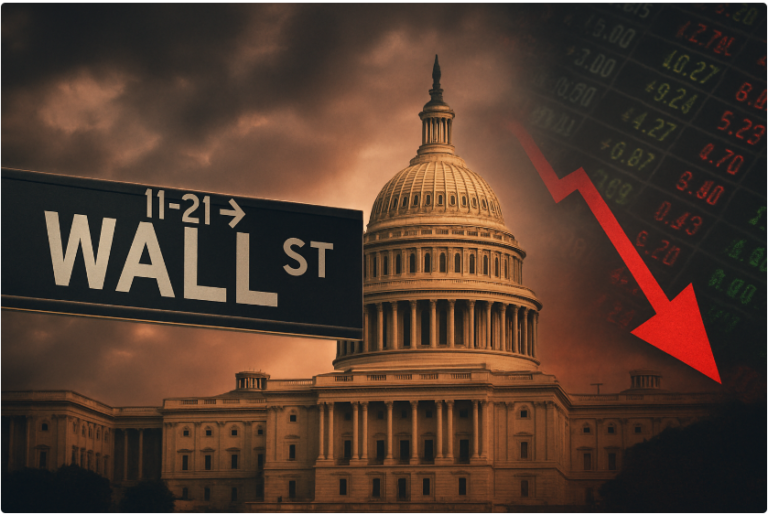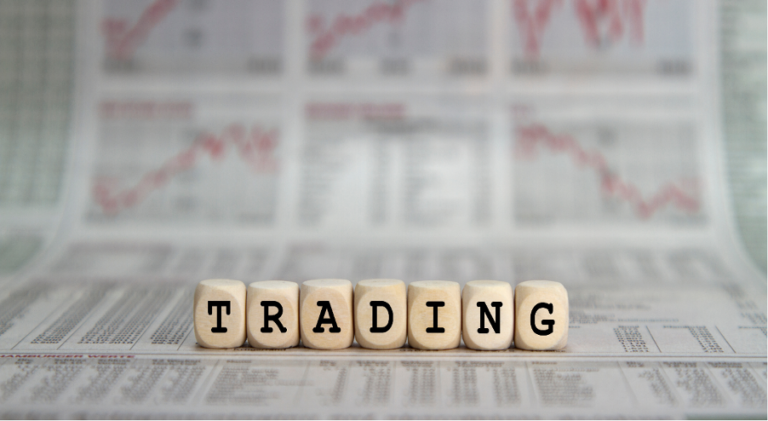Is the U.S. Market in a Bubble? A Deep Dive into Valuations, Liquidity & Risks
The question “Is the U.S. stock market in a bubble?” has been growing louder in 2025. With major indices hitting record highs and valuations stretched, investors are weighing short-term euphoria against long-term fundamentals. While the market continues to show resilience, several signs are raising bubble concerns — though not all indicators point to an imminent crash.
Valuations Are at Elevated Levels
One of the biggest warning signs of a market bubble is extreme valuation.
- The S&P 500 and Nasdaq are trading well above their historical averages on metrics like P/E ratios and price-to-book.
- Mega-cap tech companies are driving a disproportionate share of index gains, similar to the dot-com era.
- Investor sentiment remains bullish, even as earnings growth slows in some sectors.
While strong earnings in AI, defence, and energy have supported the rally, stretched valuations make the market more vulnerable to shocks.
Excess Liquidity & Easy Credit Fuel the Rally
- Low interest rates earlier and expectations of future rate cuts have pushed liquidity back into equities.
- Corporate buybacks and retail investor inflows are amplifying market momentum.
- This liquidity-driven rally has pushed many stocks higher without a proportional earnings increase, a classic bubble signal.
Concentration Risk in Tech & AI
- A handful of AI and tech giants are responsible for a large portion of market gains in 2025.
- This creates a fragile structure — if these few stocks correct sharply, the entire market could feel the shock.
- Similar patterns were seen before the 2000 dot-com crash and the 2021 tech correction.
Macroeconomic Risks Are Mounting
Even as markets climb, several headwinds remain:
- Trade tensions between the U.S. and China are escalating with tariffs and port fees.
- Geopolitical conflicts in Europe and the Middle East are pushing up energy and gold prices.
- Global growth remains uncertain, and central banks may not be able to support markets indefinitely.
These factors make the market more sensitive to negative shocks — a typical late-cycle signal.
Investor Behaviour Resembles Bubble Psychology
- Retail trading activity is high, with increased speculative bets on options and small-cap stocks.
- IPO and meme stock activity have picked up again, similar to previous bubble periods.
- Investors appear more focused on momentum than fundamentals, which can signal overheating.
But… Fundamentals Are Not Entirely Weak
To balance the picture, not everything points to a bubble:
- U.S. corporate earnings remain strong in AI, defence, energy, and manufacturing.
- Fiscal stimulus and infrastructure spending are supporting growth.
- Inflation is stabilising, and monetary policy may turn supportive again with possible rate cuts.
This combination of strong fundamentals and speculative excess makes the situation more complex than a simple “bubble or not” narrative.
Bottom Line: A Fragile Rally, Not a Full-Blown Bubble Yet
- The U.S. market shows many bubble-like characteristics — stretched valuations, speculative behavior, and macro risks.
- But it also has real earnings strength in several key sectors, unlike the 2000 dot-com bubble.
- A correction is possible if rates rise, earnings disappoint, or geopolitical tensions escalate.
- Long-term investors should focus on fundamentals, diversify, and avoid chasing momentum blindly.
About MarketFacts
MarketFacts provides in-depth investment research, market analysis, and portfolio insights across asset classes and geographies. Our mission is to help investors make informed decisions to invest safely in increasingly uncertain investment scenarios using our investment research reports.






